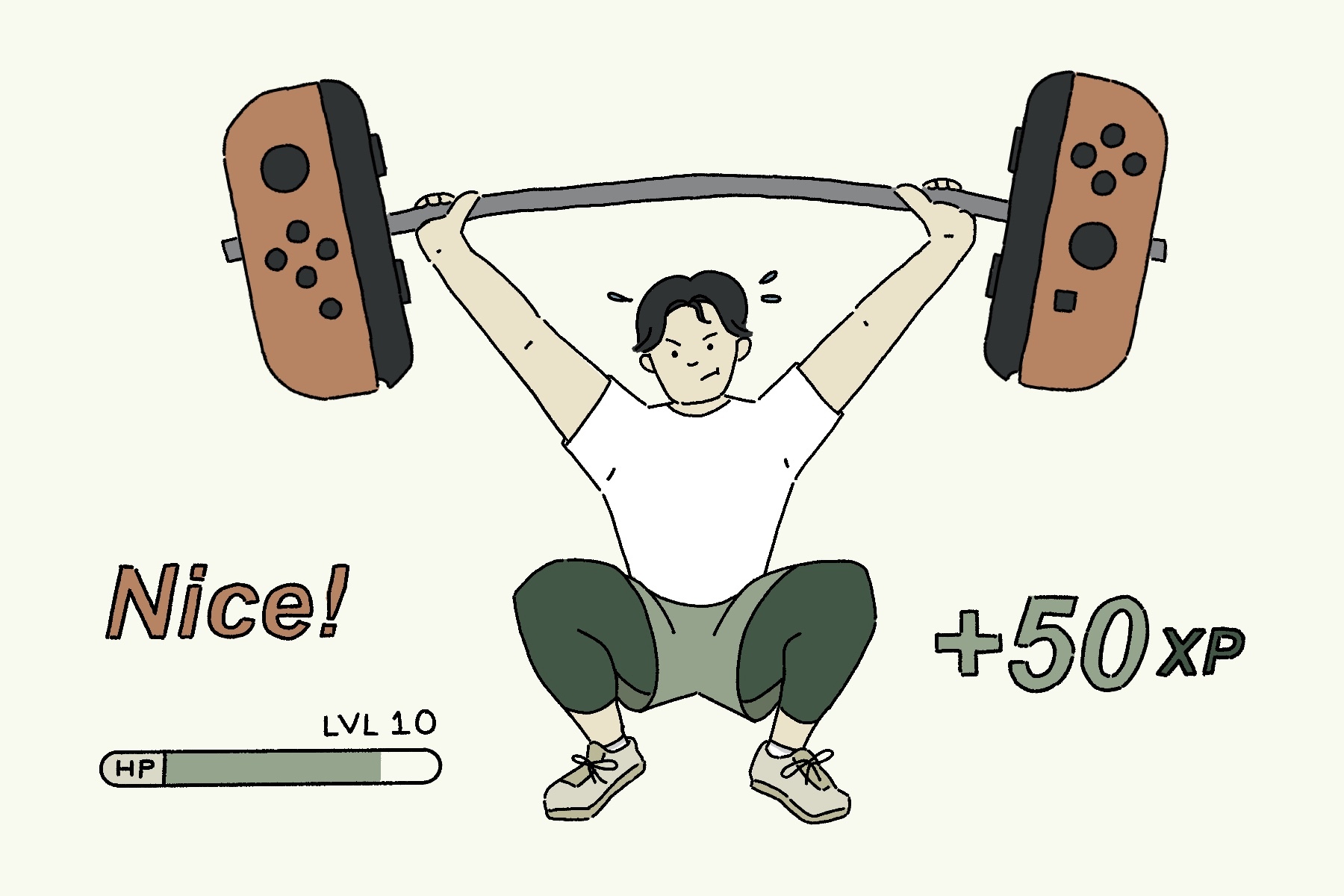The COVID-19 pandemic has made it harder than ever to stay physically active, but one thing has helped: zombies.
In 2012, Adrian Hon and his creative partner, writer Naomi Alderman, launched the mobile fitness gaming app Zombies, Run! Somewhere between an audiobook, a running app, and a role-playing game, it casts the listener as an unnamed protagonist surviving hordes of zombies after a helicopter crash. The only way to keep the story moving is to literally keep moving—walking, jogging, or running. The ongoing story has kept people engaged over the course of a decade: there have been enough plot twists, double-crosses, and surprise deaths to rival whole seasons of The Walking Dead. Author Margaret Atwood, a mentor to Alderman, even co-wrote and cameoed as herself in a Canada-centric episode.
Early in the pandemic, the game adapted with the times, working the global state of emergency into its dystopian world. In March 2020, Zombies, Run! launched “The Home Front,” a new mode designed to get people moving while stuck at home. To escape a zombie megahorde, users are encouraged to keep active by doing push-ups, chair-sits, planks, and other home exercises.
Today, the fitness app has more than a quarter of a million active players and spinoffs like Zombies, Run! 5k Training and The Walk. And, last year, the company behind the game, Six to Start, was acquired by Australian digital health and fitness company OliveX for $9.5 million (US).
The popularity of similar fitness games and apps has exploded during the pandemic. Nintendo’s Ring Fit Adventure, which combines exercise with a role-playing game, was virtually impossible to get in 2020, with prices skyrocketing among third-party sellers on eBay and Amazon. Peloton, a brand of very expensive exercise bike that allows people to recreate spin classes at home, has users rack up points to get higher and higher on a leaderboard. Oculus VR and MirrorAR workouts—where people immerse themselves in virtual worlds or exercise in front of mirrors embellished with interactive instructors, like strange sci-fi boot camps—have become luxury items. Wearable-workout-tech company Fitbit has tens of millions of users. And download numbers have increased for exercise apps like Nike Run Club and Apple Fitness+, mindfulness apps like Headspace and Calm, and diet apps like Noom.
Their characteristics all differ, but there’s one thing most of these digital fitness apps have in common: gamification. That is, they harness the principles of game design—badges, leaderboards, challenges, rewards—to motivate users toward real-world goals.
For years, video games were villainized for causing addiction and sedentary lifestyles, but our relationship to them seems to have evolved. Our lives are now more gamified than ever: the concept has been adopted by tech companies, governments, workplaces, and museums. “People are accustomed to viewing games and game aesthetics in a certain way because they’ve literally grown up with games,” says Hon over Zoom from the UK. “So it’s not really surprising that you would have those kinds of mechanics and aesthetics seeping out into other spheres of life.”
But, regardless of how well it may keep us motivated, gamification is not necessarily good. It all depends on how it’s used and by whom. Not everything that looks like a game is harmless fun.
The years leading up to the launch of Zombies, Run! were a golden age for gamification, Hon recalls. Apps like Foursquare gamified exploring your city and eating at restaurants by letting you “check in” and earn badges for doing so. The trend then made its way into politics, with Barack Obama using Foursquare check-ins to gather grassroots support. On Facebook and other social media platforms, Ontario’s Progressive Conservative and Liberal parties awarded “points” to supporters for canvassing activities. Video games, or at least their elements and mechanisms, were touted as ways to improve education, dating, and health care and even reduce world hunger. In TED Talks, public intellectuals like game designer Jane McGonigal evangelized about the power of games to build a better world.
In Canada, we have a revealing case study for the power of gamification and government interest in the trend: Carrot Rewards. The app, developed in 2015 by a team led by entrepreneur Andreas Souvaliotis, was funded by multimillion-dollar investments from the federal government and the governments of Ontario, BC, Newfoundland and Labrador, and the Northwest Territories. Users could earn points for hitting daily step counts or completing health quizzes. But what made it especially popular was that the points translated to real-life rewards: Aeroplan, Petro-Canada, and Cineplex Scene points. You could earn free movies just by walking.
The app was a major success, at least in terms of adoption, with roughly 1 million users in its four-year existence. And, unlike those of many other gamified apps, Carrot’s results were evaluated and quantified in medical journals.
“The federal government funded [Carrot Rewards] with a $5 million grant to get it off the ground,” says Marc Mitchell, an assistant professor of kinesiology at Western University, in Ontario, “and because they gave the company $5 million, they expected to see results.”
Mitchell was on the team that launched Carrot, working with the company on behavioural psychology and the mechanics of nudge theory, or the idea that one’s actions can be shaped by positive reinforcement and indirect suggestion. The foundation of rewards systems, nudge theory has been around since the mid-’90s, but the new crop of gamification apps are testing it in real time. Every point earned, push notification sent, and challenge repeated puts a psychological theory of motivation into action.
Over the course of Carrot’s existence and beyond, the team published reports on how adjusting certain techniques of gamification—reward sizes, timing, peer participation—affected how people used and responded to the app. A study found that the app was cost effective and could increase walking, which can reduce the risk of colorectal cancer, ischemic heart disease, and diabetes. In doing so, it could also reduce doctor’s visits and hospitalizations, which lowers health care system costs.
However, Carrot was unsuccessful in one important respect: its business model. Ontario pulled its funding, as did a number of investors, as the app failed to achieve national reach. Eventually, it was sold to a company called Optimity, which relaunched the app under its own name in December 2020.
Many of the people behind Carrot, meanwhile, are teaming up to release Caterpillar. Mitchell says the new app, whose slogan is “Small Steps. Big Rewards,” is launching first in Leeds, UK, with a plan to launch later in Canada. He adds that it will be similar to Carrot but with a more sustainable business model.
“One of the things we’ve learned is that you don’t have to give people rewards forever to stimulate and sustain healthy behaviours,” says Mitchell. “You can provide rewards for a short period of time and then start to wean people off and let other [intrinsic rewards] take over, highlighting other benefits of a physically active lifestyle, like better sleep or mood. . . . ‘Did you notice you were a better partner today as a result of the game?’ Whatever it is, that sort of thing could potentially drive you toward sustained behaviour.”
Gamification is often criticized for ignoring intrinsic joy or satisfaction, so highlighting those positive incentives is important. If you promise someone ongoing external rewards, like free movies, or even internal ones, like the endorphin rush of a completed step target, they might not keep up the healthy behaviour without you.
“I like to talk about motivation mountain,” says Mitchell, slipping into kinesiology-professor mode. “We’re trying to get people up to the top of the mountain, where motivation is purely intrinsic. So how do we move people up the mountain? We’re trying to encourage people to satisfy three basic psychological needs: social relatedness, autonomy—not feeling forced—and the most important one, [which] is confidence. Can we increase people’s confidence in their ability to go for a walk three days a week? If we can do that, we can move them up the mountain. Then they might start to enjoy it, then sustain the behaviour longer term without the rewards or without the app.”
There will soon be two versions of a Carrot-esque app for Canadians to choose from. Toronto-based Optimity has existed since 2014 but mostly focused on business-to-business wellness, providing gamified programs to employers and insurance companies across Canada, the US, and Japan, until its 2019 acquisition of Carrot. It has now converted a large percentage of Carrot’s user base to its first consumer-facing app.
Like Carrot, Optimity’s app lets users earn points (or “gems”) by hitting daily step counts or completing health surveys. Users can earn more by working cooperatively with friends in “Step Together” challenges or by meeting their targets for consecutive days. Unlike in Carrot’s public-private model, Optimity has more business partnerships, and the rewards are more varied (and some are less lucrative). You can spend your gems on discounts for protein coffee or standing desks, on Petro-Points or More Rewards points, to enter raffles for gift cards, or to make donations to charities like World Vision.
Optimity CEO Jane J. Wang says gamification is often reduced to simple principles like points and leaderboards, but its effectiveness is all in the finer details of the design: making it easy enough for people to stick with but challenging enough to keep them coming back. “It takes a lot of work and polish to make something simple, but once you make it simple, you see better user engagement rates and daily return rates,” says Wang.
There has to be room for failure so users can play and replay. You also have to design for fatigue, and it can help to have users set achievable goals that are dynamic and personalized—not an arbitrary 10,000 steps but a number that works for each person and changes over time. If users can rope in a friend to keep each other accountable, even better.
In a feature by Martin Patriquin for The Logic before the Optimity relaunch, Carrot founder Souvaliotis complained that Wang and Optimity had bought the health data of millions of Canadians for cents on the dollar. That data could be valuable to charities, insurance companies, and employers who use Optimity’s corporate-wellness programs. Optimity, like most health apps, relies on users volunteering a lot of personal health information, from daily step counts to specific health goals to demographic info and even specific health conditions.
Wang says Optimity adheres to a “data for good” philosophy, using data to “give value back to the user.” Optimity processes that data into public consumer-insights reports, tracking things like steps completed and voluntary survey results about workplace engagement, morale, and healthy lifestyles. Wang couldn’t comment on the use of raw data from the app, as it’s an area the company is still partnering on and exploring.
Giving personal information to an app is one thing, but giving that information over to your employer can be even more fraught. Certain limitations on how companies can collect and use this data are legislated by the Personal Information Protection and Electronic Documents Act. But users might be more likely to give up information as part of an objective for something that resembles a game.
Depending on who’s in charge, the psychological techniques of gamification can be used for good or evil. Toronto digital-media arts exhibition Vector Festival announced an “after gamification” theme for 2020 but had to change gears because of the pandemic. In an email, co-curator Martin Zeilinger writes that the theme was meant as a critical response to “the rampant gamification of everyday life” and the late-capitalist idea of “playbour,” which attaches optimization and productivity metrics to something meant to be fun, effectively turning play into work.
He points to a few different art projects that have played with or exploited gamification principles in order to critique them: Harun Farocki’s video series on the gamification and dehumanization of warfare; Ben Grosser’s Demetricators, browser extensions that remove all metrics on Facebook; and Kate Crawford and Trevor Paglen’s ImageNet Roulette, which highlights the inherent biases of online personality quizzes and facial-recognition software by creating a classification of you (often purposefully offensive) based on a selfie you upload.
Zeilinger also points to a real-life gaffe from exercise-tracking app Strava, which unintentionally gave away sensitive data uploaded by active American soldiers about military bases and spy outposts around the world—all in the name of gamified fitness.
“In digital contexts, gamification almost always masks efforts to harvest user data or extract digital labour,” writes Zeilinger. “Many platforms and companies that employ gamification strategies rely on the common public misconception that, as long as something harnesses ‘play’ as a mode of interaction, it can’t be such a bad thing. Well, in my opinion, that’s almost never true. When you gamify your fitness routines and feel more motivated to work out as a result, you usually also feed your biometrics into databases of mind-boggling commercial value, and your behaviour and interests are then analyzed, hired out to third parties, and sold back to you in various ways.”
Because of its connections to fun and play, gamification is often treated as something innocent and well-meaning rather than a calculated means to an end. If a game makes something boring or arduous feel fun, how could it be bad?
After the success of Zombies, Run!, Adrian Hon has often been called on to champion the virtues of gamification or to help people apply it to their apps. But he’s a reluctant expert. “I don’t really like gamification,” he says. “I’m not against it as a concept, but I think the way it’s done in most apps and by most companies is just ineffective or coercive. The problem with gamification is that so much of it is quite bad.”
So he’s writing a book about it. You’ve Been Played: How Corporations, Governments, and Schools Use Games to Control Us All comes out September 20 and promises to be the flip side of the neoliberal optimism that often pervades discussions on the topic. Instead, it’s a look at how gamified apps can use behavioural psychology and nudge theory toward exploitative ends. He looks at games used to incentivize Amazon warehouse workers and video game–style “quests” for Uber drivers that manipulate workers into putting in longer and harder hours for basic wages disguised as bonuses.
“I think people assume, mostly correctly, that games are balanced and they give you a chance of winning and they are kind of meritocratic. . . . [But] there’s no law saying anything that looks like a game has to be unbiased or fair. You can design a game that’s unfair, and I would argue there are a lot of games that are designed against the player, against the worker,” he says. “Sometimes you don’t really have a choice in playing them.”





